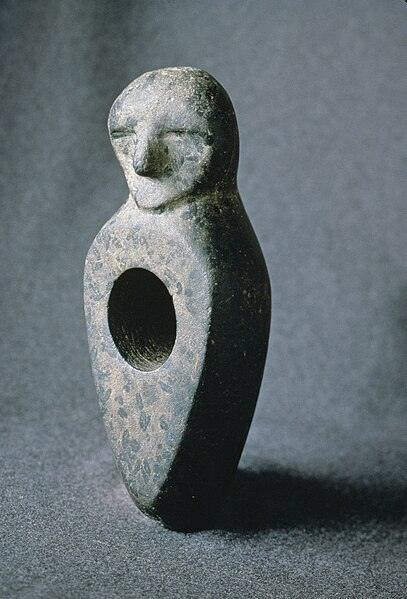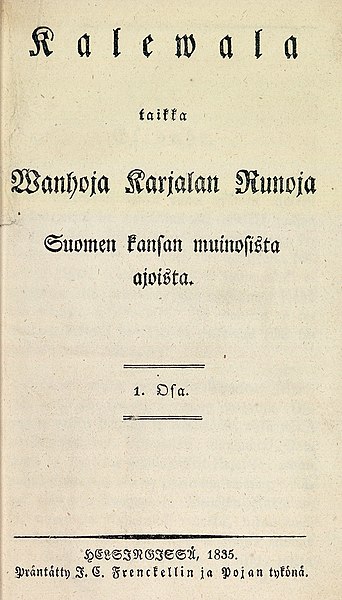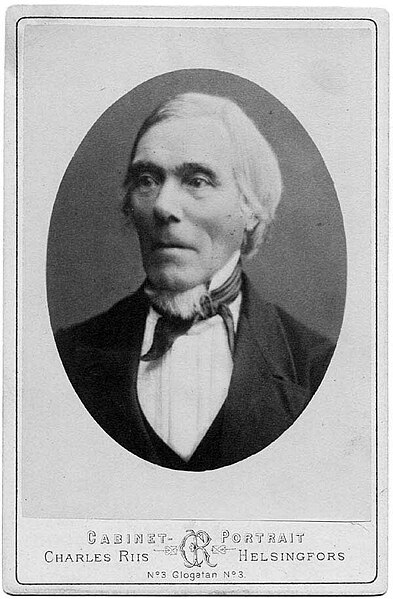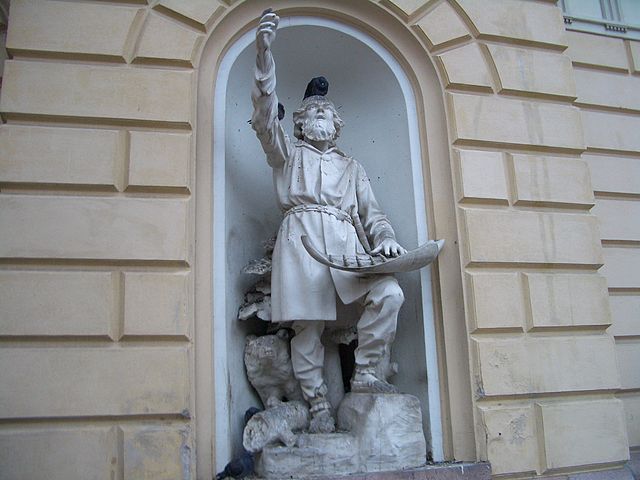The history of Finland begins around 9,000 BC during the end of the last glacial period. Stone Age cultures were Kunda, Comb Ceramic, Corded Ware, Kiukainen, and Pöljä cultures. The Finnish Bronze Age started in approximately 1,500 BC and the Iron Age started in 500 BC and lasted until 1,300 AD. Finnish Iron Age cultures can be separated into Finnish proper, Tavastian and Karelian cultures. The earliest written sources mentioning Finland start to appear from the 12th century onwards when the Catholic Church started to gain a foothold in Southwest Finland.
Stone Age stone axe engraved with human face found from Kiuruvesi.
Pieces of the Antrea Net (8,300 BC), the oldest-known fishing net in the world.
Kastelli Giant's Church in Pattijoki by Pöljä culture [fi]
Stone Age dwelling named Kierikki 5000–3000 BC
The Kalevala is a 19th-century compilation of epic poetry, compiled by Elias Lönnrot from Karelian and Finnish oral folklore and mythology, telling an epic story about the Creation of the Earth, describing the controversies and retaliatory voyages between the peoples of the land of Kalevala called Väinölä and the land of Pohjola and their various protagonists and antagonists, as well as the construction and robbery of the epic mythical wealth-making machine Sampo.
Kalevala. The Finnish national epic by Elias Lönnrot. First edition, 1835.
Elias Lönnrot
The statue of Väinämöinen by (1888) decorates the Old Student House in Helsinki
A caricature of Elias Lönnrot by A. W. Linsen: "Unus homo nobis currendo restituit rem" – "One man saved everything for us by running".



![Kastelli Giant's Church in Pattijoki by Pöljä culture [fi]](https://upload.wikimedia.org/wikipedia/commons/thumb/6/60/Kastelli_giant%27s_church_1.JPG/640px-Kastelli_giant%27s_church_1.JPG)




